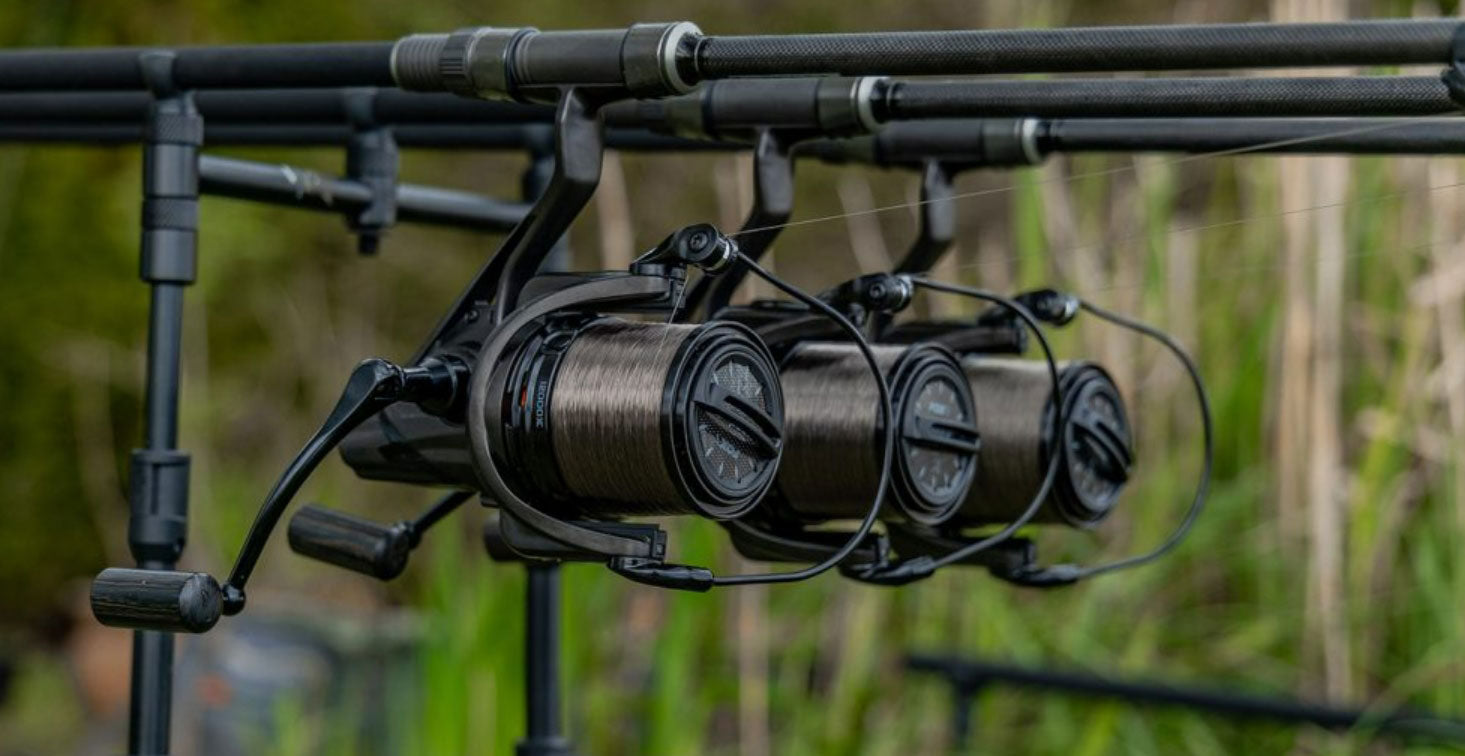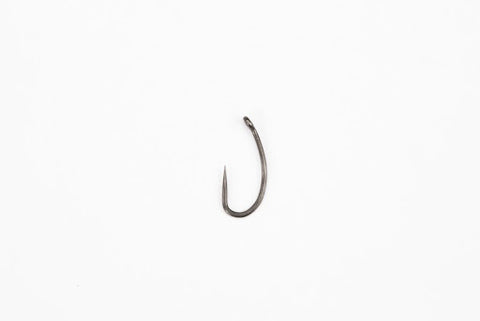on all orders over £100

Carp hooks: Getting to understand them and their uses
Hooks that we now use for carp fishing haven’t really changed that much over the years. In the 80s I was using Drennan Super Specialist hooks but not because I knew anything about them but that's all the tackle shop I used sold. Then as carp fishing got more popular and so did my pocket money, Drennan bought out the Drennan Boilie Hook and the Drennan Continental and Continental Star Point hook patterns. We couldn’t get these locally so when my mate passed his driving test we visited this wonderful shop called Fosters of Birmingham and wow what a place. I bought a pack of the boilie hooks and the continental Starpoint hooks as they looked so much stronger than the ones I was using.
The Drennan Boilie hook was a dumpy wide gape hook made using quite a thick gauge wire with a black coating and a slightly out-turned eye. The Star point hooks were like a curved shank hook where the shank straightened halfway up towards the eye but you wouldn’t call them a bent hook. From the start of using both the hooks, I realised I was landing far more fish on the wide gape than I was on the slightly curved shank star point hooks. So the wide gape hook is the style of hook I’ve mainly stuck with.
See back then rig mechanics were only known to the really dedicated carp angler and to be honest until I got to high school I really didn’t know there was a carp fishing scene going on. I was brought up in a small quiet village where I caught carp in our local village pond and ponds in farmers fields that I shouldn’t have been fishing, but hey ho. It wasn’t until I got a copy of the Angling Times that I read a section on carp fishing that I started to learn more.
One chap had written on how his catch results had shot up by putting something called Shrink Tube on the eye of his hook coming slightly down his hook link. He tested different rigs in his garden pond and as he watched the carp in his pond feed and the ones that picked the rig up with the shrink tube on had the best hooking potential. He said that by adding this shrink tube the hook turned quicker in its mouth and hooked into its bottom lip.
Great, off I went down to my local tackle shop and asked for some shrink tube and they looked blank at me. One chap in the shop said, what do you want that for? The only place you will get that around here is the motorbike shop up the road, they use it to cover joints on wires, so that's where I went and had to buy it in half-meter length.
Next time at my lake I was all ready and set, six inches of Black Dacron hooklink material, size 6 boilie hook with a shrink tube kicker, medium length hair and my old trusted 15mm Zenon Bojko Yellow Strawberry Boilies. I was catching fish but not the catch rate this bloke said he was catching.
One thing I did notice is that I was always adjusting the shrink tube when I reeled in and normally with the wind and that I’d snag my jumper, normally in the back where I couldn’t reach it with the hook but it wasn’t. After running the rig over the arm of my jumper quite a few times as I didn’t know about pulling the rig over the palm of your hand then or it more than likely wasn’t a thing then, I noticed a couple of key things.
Due to the dumpy hook and the short shank and the beaked point the shrink tube was getting too close to the point of the hook when it moved so the shrink tube was closing up the gape of the hook resulting in less fish so something needed to change.
So when we went back to Fosters I saw these hooks by a bloke called Kevin Nash and they were Nash Fang Twister Hooks. Wow, these looked so aggressive but what I liked was the longer shank, slightly inturned eye and straight point and the gauge of the wire wasn’t so thick but they were and still are today super strong. I got a pack of these, put my shrink tube kicker on and my catch rate went through the roof.
I’d used these hooks for years and never changed until I opened my shop CPS Tackle and started stocking Gardner gear. I started looking at their Wide Gape hooks and the points on them were needle-sharp, longer and thinner. I can remember taking some out of a packet then noticing blood on the pack. These hooks were so sharp that one had pricked me and I didn’t even know. Amazing I thought and I was off to France in a couple of weeks so I tied all my rigs with Gardner Wide Gape hooks on. I set up on Saturday and by Monday morning I’d caught two fish and lost nine fish.
My swin was like a cauldron and I kept bumping the fish off halfway over, I wasn’t a happy bunny let's say. What I’d noticed a lot of the time is the really sharp point would come back bent over like a U shape so it wasn’t hooking the fish. I spoke to the bailiff who I knew really well and he gave me a pack of size 4 Nash Twister hooks and after that, I don't think I lost another fish. At one point all three rods were going at once and my old mate Fraz had to come and help out.
When I got back I spoke to Gardner about this and they put it down to the aggressive way the fish were feeding. I personally put it down to two things, it was either that batch of hooks hadn’t been hardened correctly or the points were too fine for that size of fish we were fishing for. One thing I would like to state though is that Garder makes some of the finest gear out there and this was my fault for relying on one type of hook when perhaps their Continental Hooks would have been the better choice, a valuable lesson learned!

This was one of the many fish from that trip at Jurassica 2 in France, a lovely fish of 45lb. Please note the blue electrical tape around my middle finger. This was due to catching a really angry common carp at 2am in the morning. The size 4 fang twister hook had gone through the lip of the fish and caught in the net. As I was trying to deal with the fish in gale-force winds and rain it thrashed in the cradle sinking the size 4 barbed hook into my finger till I could feel the point of the hook scratching on the bone.
The only way I could free myself from the fish and the net was with my trusty forceps. I gripped the hook, shut my eyes and quickly pulled and luckily it came out the first time, thank god. Fish went back unharmed and I headed off to my car for a plaster and something to keep it dry, then back to the carp.
The thing with today's carp fishing world is you're told which hook to use with the rig you want to tie because of the people that made mistakes and educated themselves. Also, a lot of you only use the rigs you are shown by the so-called experts because they catch lots of fish on them so you should as well. But what if you don’t catch on those rigs will you explore why it’s not working or just bin it off saying it’s rubbish. Don’t forget that new rigs only evolved because someone needed to change something because it wasn’t working and just like your hooks we can keep buying different patterns of hooks but do you truly know why?
I always use a wide gape hook because it deals with 95% of my fishing but the main reason and as you’ve read is because I’ve learnt to trust them. I still rate and use Nash Twister hooks but now that the points are longer and sharper that makes me a bit nervous so I’ve gone over to the Nash Claw hooks as I love the size of the gape and the different angles on the curve of the hook to help prevent it coming back out. Also when playing a fish you are playing them from the angle at the bottom of the bend which is pretty much in line with the eye of the hook so everything is being pulled inline.
Curve Shank Hooks
Another very popular hook is the Curve Shank hook. This pattern of hook was mainly used in fly fishing then they started getting used in carp fishing due to their hooking potential and how aggressive they can move in a carp's mouth due to their shape. Also, the curved shape of the hook is supposed to make it harder for the fish to become unhooked but we all know this still happens with all hook patterns. But after learning about the curve this is where the advancement of hooks like the Korda Krank Hooks and the Nash Claw Hooks were developed with the knowledge of knowing the more the curve or angles the more the hook needs to rotate before it comes out. The curve shank hook is very popular when using pop-ups.

Stiff Rigger or Chod Hooks
These hooks are known by their out-turned eye and not in-turned eye like most other hooks have unless the eye is straight. This pattern of hook is ideally used with still rig materials like fluorocarbon and bristle filaments hook link materials. In tests, they have found that when using this type of hooklink material with an in-turned eye it has weekend overtime where it hasn’t on an out-turned eyed hook. The main use for this hook is on the extremely popular Chod Rig.
Long Shank Hooks
The Long Shank Hook is the least popular pattern of hook now. It was mainly used by trout and salmon anglers because the longer shank would help prevent their small teeth from cutting the line whereas when they used shorter shanked hooks. I’m not a fan of the long shank hook as I feel in the wrong hands they can cause too much damage to a carp's mouth, especially when used in the “Bent Hook” method.
Read What Our Customers Think
Need some advice?
Call us on 01827 712297 or email info@cpstackle.co.uk
